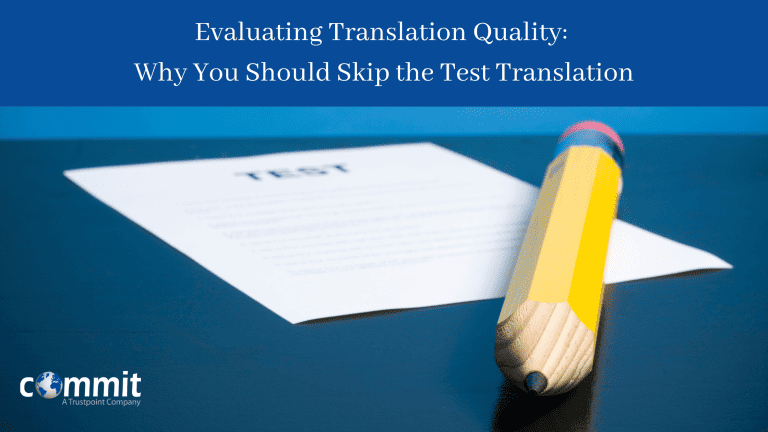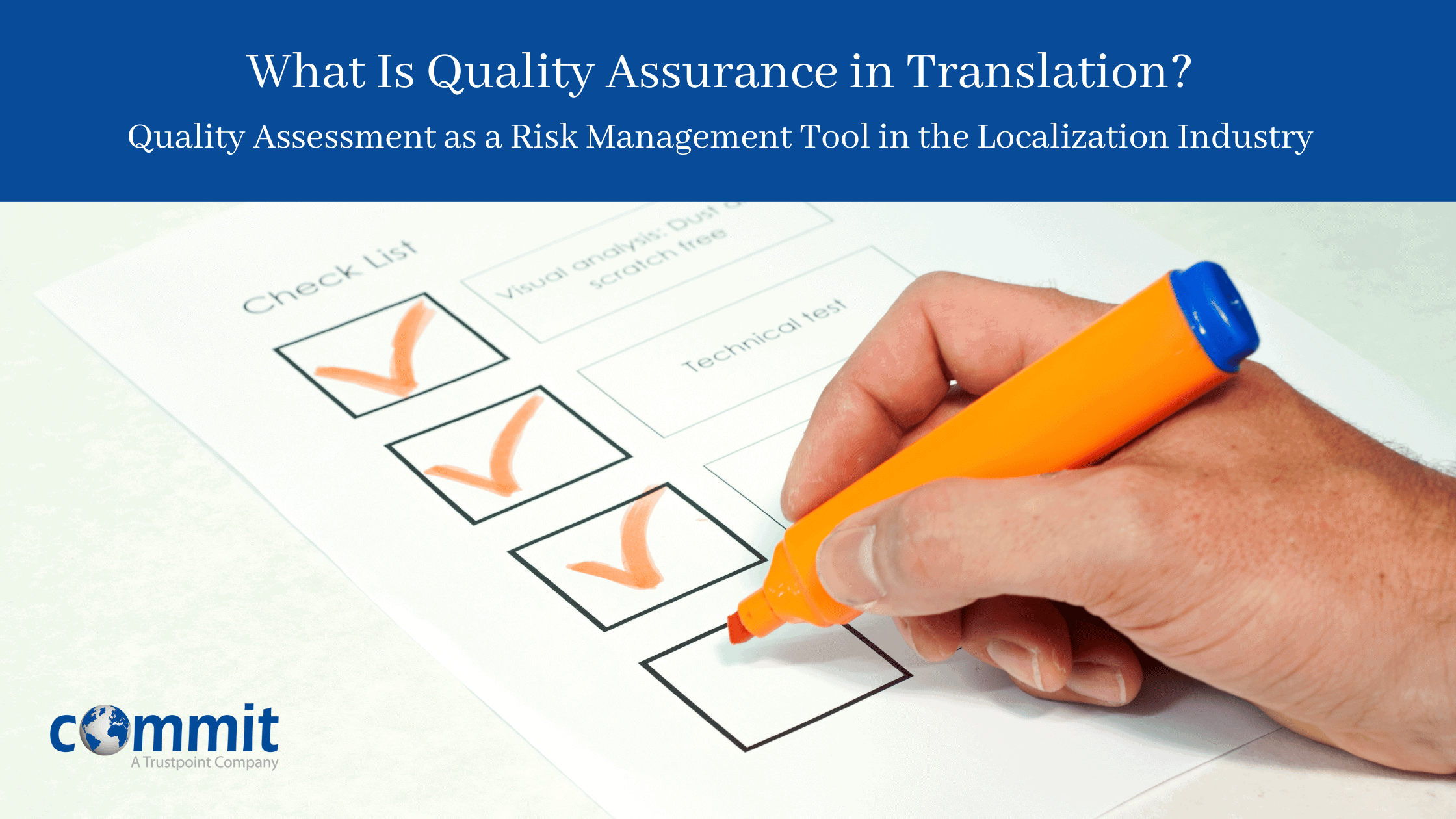|
Listen to Post
|
Listen to this article now:
Language Service Providers (LSPs) are often requested to take translation tests before being assigned a project. However, as a translation buyer, this approach doesn’t guarantee that you will safely and accurately judge the provided quality and below we’ll see why.
What is translation evaluation and why is it necessary?
Quality evaluation tends to be a standard practice in the any industry, translation not being an exception. Translation evaluation is the process of assessing that a chosen or prospective Language Service Provider is able to deliver high quality results that covers your needs. It goes without saying that as a translation buyer you would want to be certain that your product is in the hands of a professional translation agency that suits your needs and caters for your specific requirements. It’s necessary to check swift responses, good communication, quality of final product and overall achievement.

What is a test translation and why you should skip it
It is a relatively common practice, normally as part of the onboarding process for choosing new LSPs, that companies carry out translation evaluation by means of a test translation. A test translation is a sample translation done by the LSP to assess their skills and suitability for a particular job or account. Although it appears as the easiest, fastest and most straightforward way to evaluate an agency’s work, it is also true to say that it poses so many constraints that don’t allow for a deeper insight on the overall quality of the provided work.
To name a few, test translations, due to their fragmented and volume restricted nature, can’t judge with accuracy the performance of an LSP. Below are only some of the reasons this happens:
- The cornerstone of a high quality translation are glossaries and terminological assets (such as Termbases) that are usually compiled ideally at the beginning of a project and submitted for review and approval before the actual translation task or during subsequent steps. Test translations do not allow the time or context needed for the creation of such terminological assets, and rarely do companies provide any.
- Similarly, test translation projects are rarely, if ever, accompanied by style guides, which are mainly focused on other key aspects of a quality translation, such as punctuation, formatting, tone of voice etc. On the contrary, during a live project an expert LSP can help you, as their client, to develop a style guide for the target language, thus ensuring a more consistent and reliable output.
- Companies that are committed to high quality invest in training their partners with regards to the specifications of their product. This is a beneficial but time-consuming process that pays overtime. Given that training is not feasible in the framework of a translation test, the LSP’s learning potential and account understanding is not assessed through a test translation.
- During a normal translation process, translators ask questions to clarify terms, meaning, intent, thus being able to better grasp the meaning of the source. This is very rare in the test translation process and linguists resort to translations that they do to the best of their understanding, or guessing. This, combined with the fact that the completion of test translations is requested in a short amount of time, doesn’t leave room for the linguist to have an overall understanding and optimal result.
- Most often test translations are requested within very short turnaround times, leaving the LSPs little or no time to follow all the necessary steps that they would normally follow in a typical workflow. This lack of adequate time to analyze the translation material and accompanying references, to engage the right linguists, to exchange information, carry out Q&As between the translators and the client, creates understanding gaps that are only filled with guessing. A trusted translation partner on the other hand is equipped with well defined workflow steps and client-familiar resources, thus making it possible to act quickly and without compromising the quality.

Alternative ways to evaluate translation quality
So, if translation assessment is a crucial step but test translations are not optimal to this end, what are the alternatives? Here are some suggestions:
The first step in ensuring high-quality translation is to hire a reputable translation agency. Look for someone with relevant experience and expertise in the subject matter of your content. Before you begin working with an LSP, check their references and credentials, their ISO certifications and their membership in recognized industry associations.
Instead of test translations, you can ask for samples of work from other similar clients. Reviewing previous translation deliverables for companies that belong to the same industry field can allow you to evaluate the quality of the LSP’s work.
However, the most crucial role in quality assessment is played by the project management methodology itself, that could be encompassed by the translation agency’s roadmap and vision. Ask your prospect vendor to explain what their own quality assurance steps entail, what their documented processes involve, what (automated and not automated) tools the PMs have in their hands to control quality and how they ensure on-time deliveries, crisis management or problem resolution.
Finally, it is worth conducting a small, paid pilot project to test language providers in real-life situations. Not only all the abovementioned restrictions of a “made-up” translation test will be overcome, but you will be able to judge in practice a vendor’s attitude to the whole process, their responsiveness, their communication support, attention to detail, thus gaining valuable insight into your future cooperation.

Conclusion
All in all, quality is a key market differentiator for your company and ensuring that it is maintained at all times is a crucial step that you can’t skip. This is why you need to avoid questionable and obsolete ways of assessing it, such as test translations. You can get the most out of a number of solutions and approaches that can ensure reliable and consistent results. All you need is the right processes for the right outcomes.
Need help with your translation projects? Contact our friendly team of experts today!









